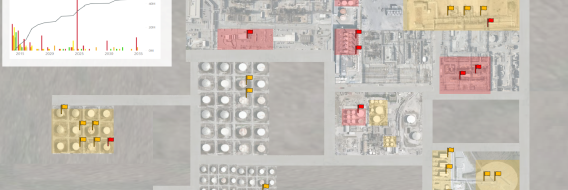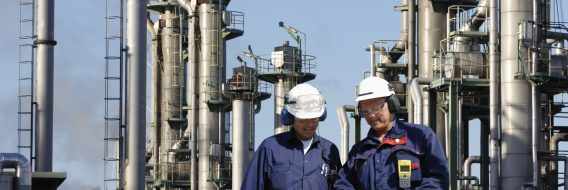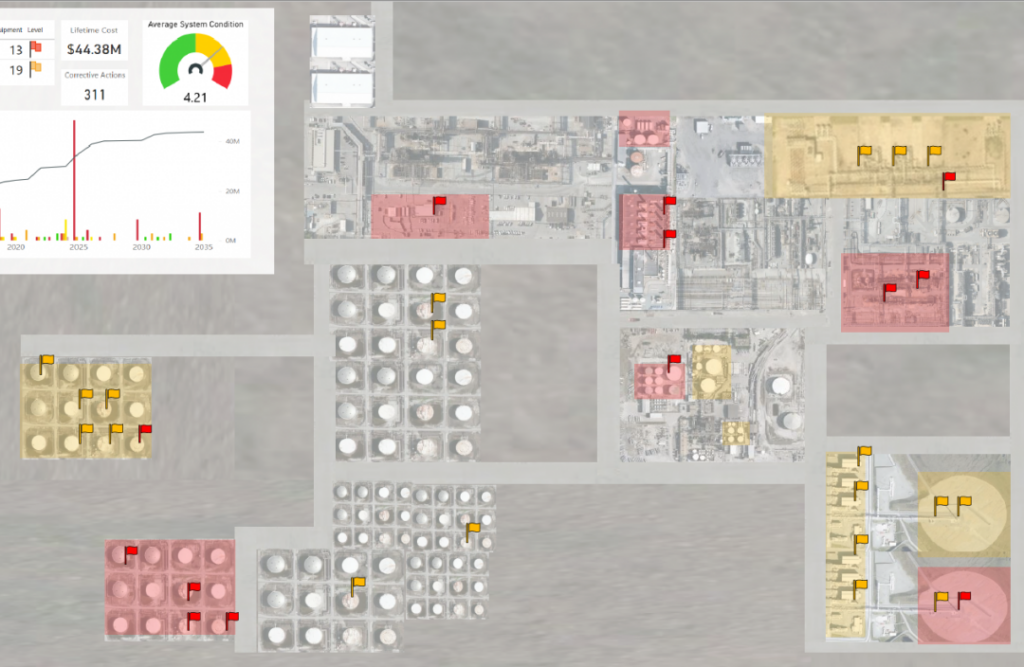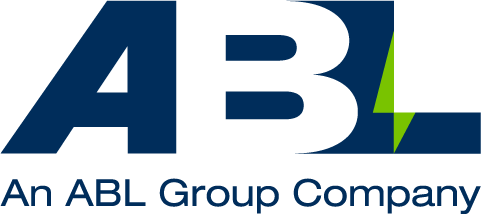Technical Integrity and Asset Lifetime Extension Assessment
Project Objective: To provide a residual lifetime assessment measurement tool to communicate area, system and equipment status, risks, threats, lifetime expenditure and mitigation actions, for the purpose of safe and reliable asset life extension.
Client: Gas Plant Operator
Asset: Onshore Gas Plant
Duration: 2 months
The challenge
To develop a measurement tool that that aggregates technical integrity of an asset’s equipment condition to highlight where deficiencies in technical integrity exist at a plant area level. The client wanted visibility on these conditions to:
- Communicate risks, threats, and change requirements to management and decision makers
- Communicate required actions in a timely manner to ensure they are planned for and implemented appropriately to maintain acceptable technical integrity
- Align the threats and risks associated with the technical integrity status with ongoing continuous maintenance and inspection activities on the facility
- Be able to demonstrate they are actively managing Major Accident Hazards (MAH) to the HSE
Why we were contracted
- The data was unstructured making it difficult to interpret and understand the risks and threats relating to the facility
- Limited view of outstanding risk and threat mitigation actions required to be completed
- Received an improvement notice from the HSE which focused on technical integrity issues that needed to be addressed
- To be able to accurately budget and plan for upcoming condition changes such as equipment obsolescence
- Poor visibility of maintenance costs or the ability to forecast budgets
- Poor ability to consolidate risks and future threats from multiple data sources into a single clear view of asset area risk, or track risk/threat mitigation actions due to them being documented on different spreadsheets across the business (no source of truth)
- No audit log of the improvement actions being completed or consolidated area to fully comprehend outstanding tasks
- Their Management of Change (MoC) process was not connected or consolidated in one place
- A lack of information in a centralised location derived from key stakeholders on site who held critical information relating to the technical integrity and ongoing improvements
What we did
- Cleansed and restructured the data associated with risks and threats to the facility’s technical integrity and condition changes
- Review of drawings, mark up of physical assets and identification of boundaries to lay the foundations for the heat map creation
- Identification and agreement the risk metrics to measure cumulative risk effectively
- Classification of maintenance tasks into coherent discipline driven groups
- Development of a residual lifetime assessment measurement tool (heat maps) to allow the team to visually represent current and upcoming issues, rank their criticality to determine high risk threats, backed by data
- Tool implementation and integration with clients Microsoft 365 environment
What we delivered
A residual lifetime assessment measurement tool (heat map)

Philosophy document to underpin the intent and usability of the heatmaps created for enhanced implementation and ownership by the key stakeholders on site

List of immediate improvement opportunities and recommendations

The value we delivered
Visibility and clarity
Full visibility of all possible risks, threats, and condition changes across the business to manage future requirements effectively
Asset life extension
Through better visibility and management of mitigation actions, the decision process has been enhanced and good decisions are being made to enhance the reliability and technical integrity of the plant to support the extension of the life of the asset
Management of technical integrity and assurance
Through digitalising the process, key stakeholders are able to interpret data more conveniently to understand cumulative risk of equipment and technical integrity assurance requirements
Cost and time-effective
Using the clients existing Microsoft 365 suite reduced costs of this project and enhanced the teams understanding of Microsoft 365 capabilities
Efficiency and proactivity
The means to proactively manage change and exposure to risk and threats through enhanced visibility of mitigation requirements and subsequent actions
Auditability of risk management
Through use of the tool as a framework for sharing information, the client can now effectively demonstrate to themselves and other interested parties, such as the HSE, how risk and threats are being managed
Operational preparedness
Provides the insights required for planning and managing business strategy, budget allocation and cost control of operations and maintenance requirements
Why we used Power BI to deliver this project
Power BI allows us to analyse, merge, and visualise disparate data while preserving the integrity of the source data in its managed system. When our clients need deep insights into dynamic and complex data, a Power BI solution is a quick, and powerful way to provide bespoke asset analytics and visualisations to help asset managers better understand and act on data driven insights.

